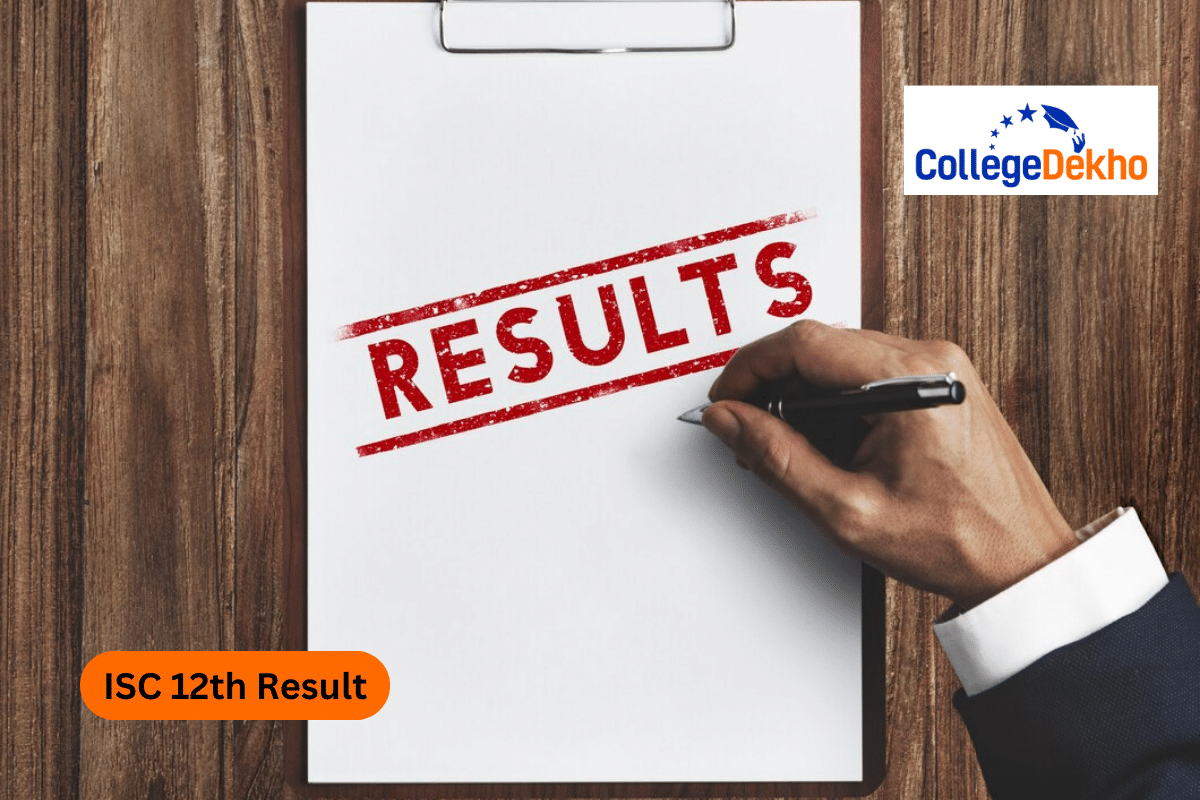

Never Miss an Exam Update
JAC Class 12 Chemistry Syllabus 2025: The Jharkhand Academic Council (JAC) prescribes the JAC 12th Chemistry syllabus 2025 for the 12th board science stream students. The state board will soon release the JAC 12th Chemistry syllabus 2025 in a PDF format on its official website at jac.jharkhand.gov.in. The JAC Class 12 Chemistry syllabus 2025 will include a total of 10 units. The highest weightage carrying unit is Electrochemistry which will carry 9 marks in the exam. The second maximum weightage carrying unit will be Aldehydes, Ketones and Carboxylic Acids with 8 marks. Students are advised to go through the JAC Class 12 Exam Pattern 2025 of Chemistry to have an idea of the marking scheme on the subject.
The JAC 12th Chemistry exam 2025 will be held for 100 marks where theory paper will be conducted for 70 marks and the remaining 30 marks are allocated to the practical exam. The state board will release the JAC 12th Exam Time Table 2025 in January 2025 on the official website. The Jharkhand Board 12th exam 2025 will be conducted in February 2025, while the practical exams are to be held in March 2025. When the students complete the syllabus, they can download the JAC Board Class 12 Model Papers 2025 for an effective revision of the board exams. Students can check out the information given below to learn more about the JAC Class 12 Chemistry Syllabus 2025:
JAC Class 12 Chemistry Syllabus 2025 Download PDF
Students can easily download the PDF of the latest JAC Class 12 Chemistry Syllabus 2025 from the official website. Below, we have also shared the PDF of the previous year for student's convenience:
JAC Class 12 Chemistry Syllabus 2025 Course Structure
Students can refer to the table below to get an overview on the course structure of JAC class 12 Chemistry syllabus 2025:
Units | Topics | Periods |
|---|---|---|
Solutions | Types of solutions, expression of concentration of solutions of solids in liquids, solubility of gases in liquids, solid solutions, Raoult's law, colligative properties - relative lowering of vapour pressure, elevation of boiling point, depression of freezing point, osmotic pressure, determination of molecular masses using colligative properties, abnormal molecular mass, Van't Hoff factor. | 10 |
Electrochemistry | Redox reactions, EMF of a cell, standard electrode potential, Nernst equation and its application to chemical cells, Relation between Gibbs energy change and EMF of a cell, conductance in electrolytic solutions, specific and molar conductivity, variations of conductivity with concentration, Kohlrausch's Law, electrolysis and law of electrolysis (elementary idea), dry cell-electrolytic cells and Galvanic cells, lead accumulator, fuel cells, corrosion. | 12 |
Haloalkanes and Haloarenes |
Haloalkanes: Nomenclature, nature of C–X bond, physical and chemical properties, optical rotation mechanism of substitution reactions.
Haloarenes: Nature of C–X bond, substitution reactions (Directive influence of halogen in monosubstituted compounds only). Uses and environmental effects of - dichloromethane, trichloromethane, tetrachloromethane, iodoform, freons, DDT. | 10 |
Alcohols, Phenols and Ethers |
Alcohols: Nomenclature, methods of preparation, physical and chemical properties (of primary alcohols only), identification of primary, secondary and tertiary alcohols, mechanism of dehydration, uses with special reference to methanol and ethanol.
Phenols: Nomenclature, methods of preparation, physical and chemical properties, acidic nature of phenol, electrophillic substitution reactions, uses of phenols. Ethers: Nomenclature, methods of preparation, physical and chemical properties, uses. | 10 |
Biomolecules |
Carbohydrates - Classification (aldoses and ketoses), monosaccahrides (glucose and fructose), D-L configuration oligosaccharides (sucrose, lactose, maltose), polysaccharides (starch, cellulose, glycogen); Importance of carbohydrates.
Proteins -Elementary idea of - amino acids, peptide bond, polypeptides, proteins, structure of proteins - primary, secondary, tertiary structure and quaternary structures (qualitative idea only), denaturation of proteins; enzymes. Hormones - Elementary idea excluding structure. Vitamins - Classification and functions. Nucleic Acids: DNA and RNA. | 12 |
Chemical Kinetics | Rate of a reaction (Average and instantaneous), factors affecting rate of reaction: concentration, temperature, catalyst; order and molecularity of a reaction, rate law and specific rate constant, integrated rate equations and half-life (only for zero and first order reactions), concept of collision theory (elementary idea, no mathematical treatment), activation energy, Arrhenius equation | 10 |
d-and f-Block Elements |
General introduction, electronic configuration, occurrence and characteristics of transition metals, general trends in properties of the first row transition metals – metallic character, ionization enthalpy, oxidation states, ionic radii, colour, catalytic property, magnetic properties, interstitial compounds, alloy formation, preparation and properties of K2Cr2O7 and KMnO4.
Lanthanoids - Electronic configuration, oxidation states, chemical reactivity and lanthanoid contraction and its consequences. Actinoids - Electronic configuration, oxidation states and comparison with lanthanoids. | 12 |
Coordination Compounds | Coordination compounds - Introduction, ligands, coordination number, colour, magnetic properties and shapes, IUPAC nomenclature of mononuclear coordination compounds. Bonding, Werner's theory, VBT, and CFT; structure and stereoisomerism, importance of coordination compounds (in qualitative analysis, extraction of metals and biological system). | 12 |
Aldehydes, Ketones, and Carboxylic Acids |
Aldehydes and Ketones: Nomenclature, nature of carbonyl group, methods of preparation, physical and chemical properties, mechanism of nucleophilic addition, reactivity of alpha hydrogen in aldehydes, uses.
Carboxylic Acids: Nomenclature, acidic nature, methods of preparation, physical and chemical properties; uses. | 10 |
Amines |
Amines: Nomenclature, classification, structure, methods of preparation, physical and chemical properties, uses, identification of primary, secondary and tertiary amines.
Diazonium salts: Preparation, chemical reactions and importance in synthetic organic chemistry. | 10 |
Total | 108 |
JAC Class 12 Chemistry Practical Exam Syllabus 2025
It is to be noted that the Micro-chemical methods are available for several practical experiments. Wherever students find there is a possibility, such techniques should be used. Here are the topics that are included in JAC Class 12 Chemistry Practical Exam Syllabus 2025:
A. Surface Chemistry
- Preparation of one lyophilic and one lyophobic sol Lyophilic sol - starch, egg albumin and gum Lyophobic sol - aluminium hydroxide, ferric hydroxide, arsenous sulphide.
- Dialysis of sol-prepared in (a) above.
- Study of the role of emulsifying agents in stabilizing the emulsion of different oils.
B. Chemical Kinetics
- Effect of concentration and temperature on the rate of reaction between Sodium Thiosulphate and Hydrochloric acid.
- Study of reaction rates of any one of the following: (i) Reaction of Iodide ion with Hydrogen Peroxide at room temperature using different concentration of Iodide ions. (ii) Reaction between Potassium Iodate, (KIO 3 ) and Sodium Sulphite: (Na 2 SO 3 ) using starch solution as indicator (clock reaction).
C. Thermochemistry
Any one of the following experiments
- Enthalpy of dissolution of Copper Sulphate or Potassium Nitrate.
- Enthalpy of neutralization of strong acid (HCI) and strong base (NaOH).
- Determination of enthalpy change during interaction (Hydrogen bond formation) between Acetone and Chloroform.
D. Electrochemistry
- Variation of cell potential in Zn/Zn2+|| Cu2+/Cu with change in concentration of electrolytes (CuSO4 or ZnSO4) at room temperature.
E. Chromatography
- Separation of pigments from extracts of leaves and flowers by paper chromatography and determination of Rf values.
- Separation of constituents present in an inorganic mixture containing two cations only (constituents having large difference in Rf values to be provided).
F. Preparation of Inorganic Compounds
- Preparation of double salt of Ferrous Ammonium Sulphate or Potash Alum. Preparation of Potassium Ferric Oxalate.
G. Preparation of Organic Compounds
- Preparation of any one of the following compounds: i) Acetanilide ii) Di -benzalAcetone iii) p-Nitroacetanilide iv) Aniline yellow or 2 - Naphthol Anilinedye.
H. Tests for the functional groups present in organic compounds:
- Unsaturation, alcoholic, phenolic, aldehydic, ketonic, carboxylic and amino (Primary) groups.
I. Characteristic tests of carbohydrates, fats and proteins in pure samples and their detection in given foodstuffs.
J. Determination of concentration/ molarity of KMnO4 solution by titrating it against a standard solution of:
- Oxalic acid,
- Ferrous Ammonium Sulphate (Students will be required to prepare standard solutions by weighing themselves). K.
JAC Class 12 Chemistry Marking Scheme 2025
A lot of chapters are included in Chemistry to be considered by the students when preparing for the board exams. You can check out the table given below and learn more about the names of the units that will be coming in the board exams:
Unit | Marks |
|---|---|
Solutions | 7 |
Electrochemistry | 9 |
Haloalkanes and Haloarenes | 6 |
Alcohols, Phenols and Ethers | 6 |
Biomolecules | 7 |
Chemical Kinetics | 7 |
d-and f-Block Elements | 7 |
Coordination Compounds | 7 |
Aldehydes, Ketones, and Carboxylic Acids | 8 |
Amines | 6 |
Total | 70 |
JAC Class 12 Chemistry Exam Pattern 2025
The table below contains the key highlights on JAC Class 12 Chemistry Exam Pattern 2025:
Particulars | Details |
|---|---|
Conducting Body Name | Jharkhand Board Intermediate Examination |
Full Marks | 70 marks (theory exam) + 30 (practical exam) |
Types of Question | MCQ, Very Short Type, Short Type, Long Type Questions |
Question Paper Pattern |
|
Exam Duration | 3 hours |
Medium | English / Hindi |
Mode | Offline |
Number of subjects | 5 or 6 (as elected by the student) |
Maximum Marks | 100 marks |
Passing marks for the subject | 33% |
Number of Questions | 32 |
Negative Marking | No Negative Marking |
How To Download JAC Class 12 Chemistry Syllabus 2025?
The syllabus will be listed on the official website of Jharkhand Academic Council to be downloaded in a PDF format by the students. Students can consider the following steps to download the syllabus as soon as possible and start the preparations:
- Step 1: You will first have to visit the official website of Jharkhand Academic Council at jac.jharkhand.gov.in
- Step 2: The homepage will open on the screen. Now, click on the Others option present on the menu bar.
- Step 3: From the drop-down menu, click on the Syllabus option.
- Step 4: A new page will open where you can click on the View Syllabus option.
- Step 5: You can now download the syllabus in a PDF format to be considered when preparing for the board exams.
JAC Class 12 Chemistry Syllabus 2025 will help students to start the preparations for the board exams. Try to complete the syllabus in the first few months of your preparation so you can make time for revision.
FAQs
The JAC Class 12 Chemistry Syllabus 2024-25 will be uploaded on the official website of Jharkhand Academic Council however the latest academic syllabus is not yet uploaded on the official website to be downloaded by the students. Students can still refer to the information given here to prepare for the board exams.
At least one month is needed for the revision of the JAC Class 12 Chemistry Syllabus 2024-25. Students must use at least 5 to 6 months to complete the syllabus at the start of the academic year and then use the remaining time to effectively revise the syllabus using model papers.
Students must try to complete the JAC Class 12 Chemistry Syllabus 2024-25 as soon as possible, preferably in the first 6 months of the academic year. Students must focus on downloading the latest syllabus uploaded on the official website of JAC to complete their preparations on time.
To effectively prepare JAC Class 12 Chemistry Syllabus 2024-25, focus on every subject separately along with the topics included in each subject. Make sure that you are making a study plan according to the exam dates released by the Jharkhand Academic Council and working your way through that.
To get the latest JAC Class 12 Chemistry Syllabus 2024-25, students need to visit the official website of Jharkhand Academic Council and click on the syllabus option present on the menu bar. It will take you to a new page where you can download the PDF of the syllabus according to the subject of your choice.
Was this article helpful?















